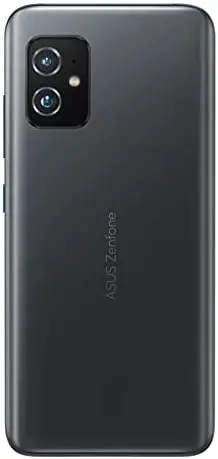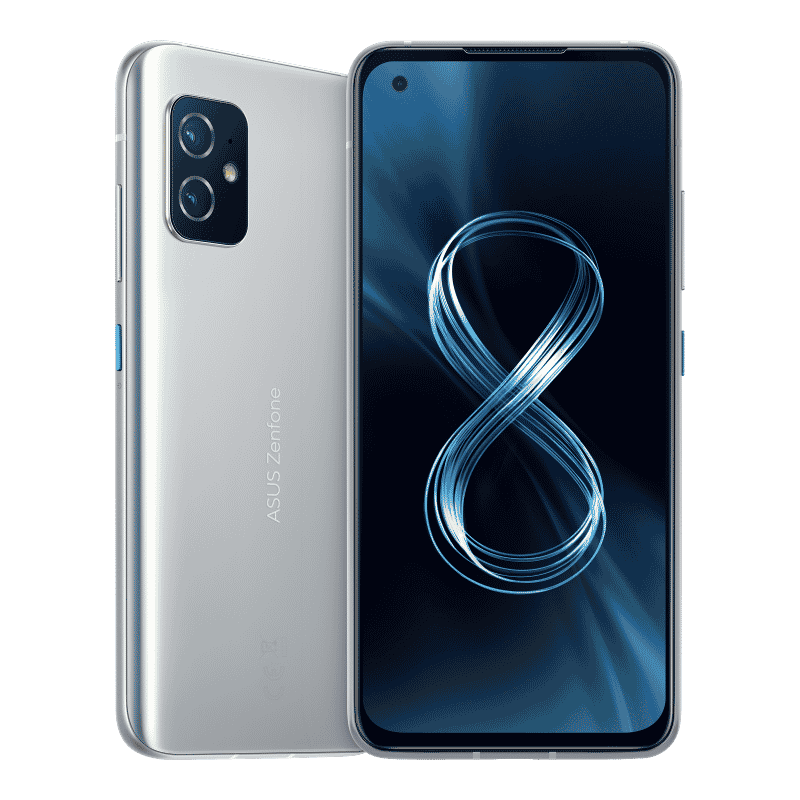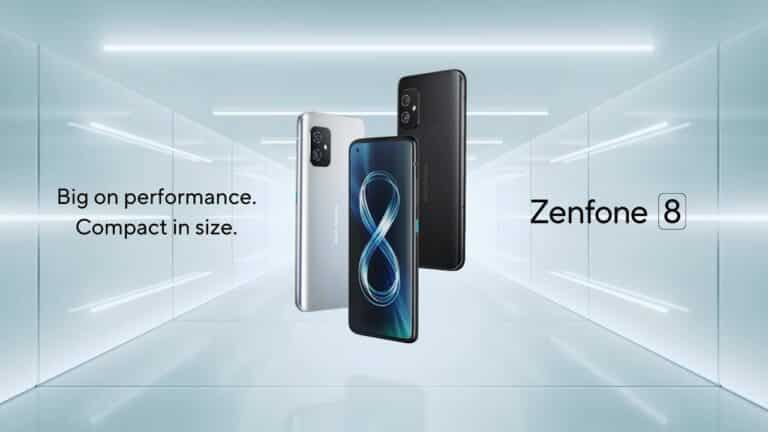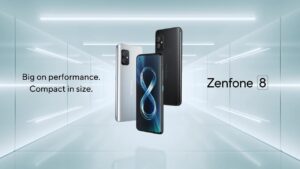The Asus Zenfone 8 has already arrived last year, and it’s a show-stopper. Although Asus is a household name in the PC world, it is a relative unknown when it comes to smartphones. The business eschewed camera notches and cutouts a few years ago, instead opting for a flipping camera unit on the Zenfone 6. However, the Zenfone 8 refines a more traditional approach to smartphone design. It accomplishes everything in a small, compact frame with a lot of power, a brilliant display, and excellent cameras.
The Zenfone 8 checks all boxes for an excellent smartphone, including a fast-refreshing display, a large battery, and a headphone port. It is a fantastic smartphone for anyone looking for the most power from a compact phone. This is without a doubt the greatest Android phone with a screen of fewer than 6 inches.
What will you see here?
Specs:
- 5.9 inch Display
- 3.5mm headphone jack
- IP68 waterproof rating
- Optical fingerprint sensor
- No micro SD card slot
- absence of wireless charging
- Two camera lenses- a primary camera with a 64MP wide-angle lens and a secondary camera with a 12MP ultrawide lens.
- Snapdragon 888 processor
- 16GB of RAM
- 4000 mAh battery
- Wired charging is supported up to 30W.
Design

The Asus Zenfone 8 appears to be pretty unassuming at first glance. Indeed, it resembles phones from several years ago. I like how the metal body curls to fit your hand. The phone is small by today’s standards, with a display that is less than 6 inches, just like the greatest small phones.
The front camera is housed in a hole punch cutout in the top left corner of the screen, while the dual-lens camera module protrudes significantly from the back of the Zenfone 8. The Zenfone 8 also comes with a nice bonus: a 3.5mm headphone jack.
It’s easy to carry it in one hand because of its small size. It’s also IP68 rated, so you won’t have to worry about it becoming wet. There’s an optical fingerprint sensor built into the display.
The one and only thing missing is a micro SD card slot. Although the absence of wireless charging due to the metallic frame is a disappointment, no phone is perfect.
The Zenfone 8 is a small phone, measuring 5.9 x 2.7 x 0.4 inches. You’ll like picking it up, especially since you’re used to large phones. Asus did a fantastic job with the build quality and design of this device.
Cameras

Like the Pixel 5, the Zenfone 8 has two camera lenses. It has a primary camera with a 64MP wide-angle lens and a secondary camera with a 12MP ultrawide lens. The Pixel 5 also sports a 12.2MP primary camera and a 16MP ultrawide camera.
In the camera category, pitting the Asus Zenfone 8 against the Pixel 5 may seem a little unfair, as Google’s phone still ranks among many of the best. However, because the prices of both phones are comparable, we can assess how good of a deal the Zenfone 8 is.
The 64MP f/1.8 primary camera, with its Sony IMX686 sensor as well as optical image stabilization, appears to have been carried over from the Zenfone 7 Pro, as does the 12MP f/2.2 ultra-wide camera with its Sony IMX363 sensor.
Photos taken in daylight appear to be of fair quality, with good clarity in well-lit photographs and plenty of detail in up-close shots. However, colors might appear overly vivid, and cameras struggle in low light, reducing clarity in the dusk as well as twilight shots.
Performance

The Snapdragon 888 processor is paired with up to 16GB of RAM in the Zenfone 8. It’s a tiny powerhouse that crushes anything Android-based in this size category, including the Pixel 5. This phone isn’t a slouch, as it demonstrates in both real-world and lab tests.
The Asus Zenfone 8 comes with Android 11 pre-installed, which includes enhanced media management, word prediction capabilities, and other features. The phone comes with Asus’ ZenUI overlay, which is a clean skin over the operating system that primarily adds the Game Genie skin, as well as more granular settings than many Android phones, such as the aforementioned System Modes for balancing display refresh rate, battery life, and other parameters.
These stats also make it a fantastic phone to use on a daily basis. You can able to multitask without experiencing any lag. The ample RAM and storage options provide ample room for apps and games, particularly since Google Photos stores images as well as videos in the cloud.
Unfortunately, unlike the 8 Flip, no microSD card slot is there if you want to expand your storage space further.
Battery life and charging
The battery of the Zenfone 8 is 4,000 mAh, which is pretty huge considering the phone’s size. In my experience, the phone’s battery life was adequate, lasting most days. If you use it a lot for Google Duo calls or games, you might need to find a charger before going to bed.
Users can extend battery life by lowering brightness & screen refresh rate, switching off the always-on display, and controlling other power-hungry settings under the various power-saving modes.
There are also recharging options carried over from the ROG 5, such as lowering the charging cap to 90% or 80% to extend battery life and also scheduled charging to maintain the battery at those caps during charging overnight, only filling it up to 100% immediately before the user’s wake-up alarm goes off.
The device comes with a 30W charger, which is quick but not as fast as the 60W charger that arrives with the Asus ROG 5. Unfortunately, unlike every prior Asus phone, the Zenfone 8 lacks wireless charging.
Display

In an age of large phablets, the Zenfone 8’s AMOLED display is quite tiny at 5.9 inches. It has an FHD+ resolution and a refresh rate of up to 120 Hz. You’ll receive vibrant colors and deep blacks, as well as great viewing angles.
The Zenfone 8’s display can be set to 60Hz, 90Hz, or 120Hz. You can also leave it in auto mode, which automatically alters the refresh rate as needed, similar to what we’ve seen on some other phones recently.
The Zenfone 8’s 5.9-inch screen is slightly smaller than the 6-inch Google Pixel 5 when compared to other ‘small’ flagship phones, however, the Zenfone 8’s display is longer and thinner, so it doesn’t feel deficient. That’s a lot more screen space than the 5.4-inch iPhone 12 small (particularly with the notch), and nearly on a level with the 6.1-inch screens on the iPhone 12 Pro and iPhone 12, but the Zenfone 8 is substantially thinner.
In a side-by-side video comparison, the on-screen picture quality is even better as compared to the iPhone 12 Pro’s, with good colors and brightness providing a picture that seems more true-to-life as on the Zenfone 7.
Software

With the Zenfone 6, Asus pulled a page from OnePlus’ script all the way back. The company’s software design was drastically altered to more closely reflect OxygenOS. The end product was a simple, minimalistic user interface with plenty of customizations and functions hidden in settings.
That decision was carried over to the ROG Phone 5 and now to the Zenfone 8. ZenUI 8 looks quite similar to what you’d get on a Pixel, and it performs an excellent job of accomplishing what you want it to do while remaining unobtrusive. While OnePlus has already strayed from Google’s vision, Asus has stayed quite close to it.
ZenUI, which is based on Android 11, has a few surprises in store to differentiate it from plain Android. First and foremost, the power button may be used as a Smart Key, allowing you to alter its behavior. Both a double click and a push and hold action can be customized. There are a lot of options.
A gaming mode is also available, which reduces distractions while gaming and pushes the Zenfone 8 to its limits for hard games. The Asus OptiPlex feature, which learns your behaviors and pre-loads frequently used apps, is here once more. You can turn it off or change it to your desire. There’s also a one-handed option, which makes using this small phone with one hand much easier.
Is the Asus Zenfone 8 a good investment?
The Asus Zenfone 8 is a valuable Android flagship that’s genuinely easy to carry, and it’s a worthy option for the iPhone 12 at $599. It offers the same processing power as its full-sized counterparts, as well as a brilliant OLED display, impressive cameras, and a sturdy display.
Is the Asus ZenFone 8 waterproof?
The water-resistance of the ZenFone 8 was tested using IEC 60529 and it received an IP68 grade. The device’s water resistance can diminish over time as a result of normal use or if it is broken, repaired, or disassembled.
Is wireless charging available on the Asus Zenfone 8?
The battery on the Zenfone 8 lasts a whole day with some room to spare. Asus kept matters in check when it came to charging speeds. Wired charging is supported up to 30W on the phone. It does not, however, feature wireless charging.
Conclusion
The Asus Zenfone 8 is a fantastic phone as the hardware is terrific, the software is fantastic, and the cameras will outperform your expectations. With the Zenfone 8, you get a lot of phones, and it’s easily the greatest little Android phone, beating the Pixel 5 in every regard except camera performance.
The Asus ZenFone 8 has a sharp display, outstanding performance, and a fantastic camera setup, all at an exceptionally low price, outperforming its sister phone, the ZenFone 8 Flip. For individuals who don’t want to settle for a large phone, the compact design is a good option.
The battery life isn’t amazing, but if you’re willing to use it in durable mode and enjoy the 120Hz display, you can get it to last all day.
Read More:
- The best calendar apps to help with keeping the dates!
- Google Pixel 7 Rumours: Everything known till now!
- Android 12: Everything you need to know about!
- Sonos Arc Home theater: Sleek, powerful, and Dolby Atmos-compatible!
















